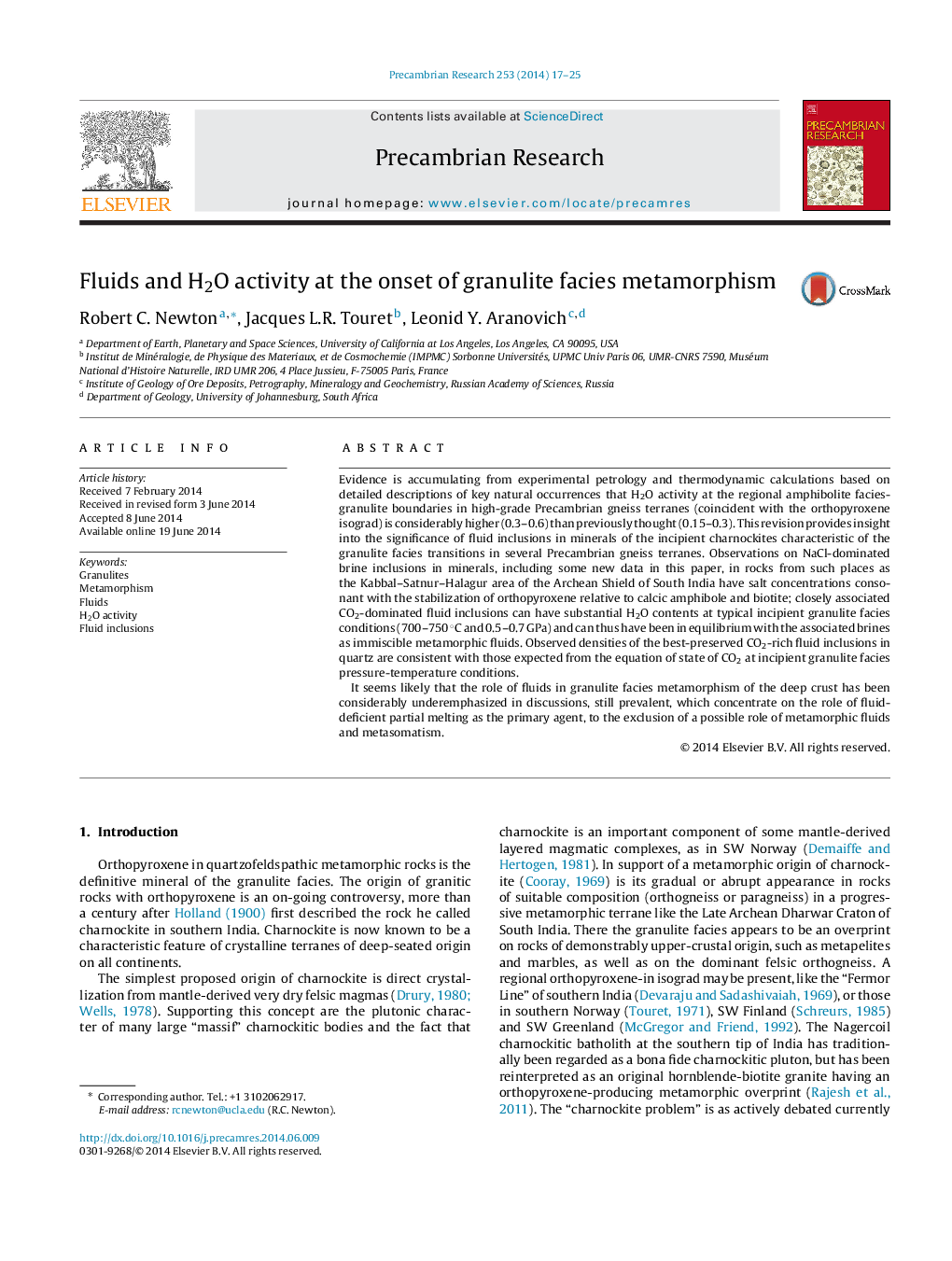| Article ID | Journal | Published Year | Pages | File Type |
|---|---|---|---|---|
| 4722928 | Precambrian Research | 2014 | 9 Pages |
•The granulite facies of metamorphism begins at 700–750 °C, 0.5–0.7 GPa.•The H2O activity for incipient granulites is 0.4–0.6.•The H2O activity for granulite metamorphism is higher than previous estimates.•The high H2O activity means that brine fluid inclusion are relevant.
Evidence is accumulating from experimental petrology and thermodynamic calculations based on detailed descriptions of key natural occurrences that H2O activity at the regional amphibolite facies-granulite boundaries in high-grade Precambrian gneiss terranes (coincident with the orthopyroxene isograd) is considerably higher (0.3–0.6) than previously thought (0.15–0.3). This revision provides insight into the significance of fluid inclusions in minerals of the incipient charnockites characteristic of the granulite facies transitions in several Precambrian gneiss terranes. Observations on NaCl-dominated brine inclusions in minerals, including some new data in this paper, in rocks from such places as the Kabbal–Satnur–Halagur area of the Archean Shield of South India have salt concentrations consonant with the stabilization of orthopyroxene relative to calcic amphibole and biotite; closely associated CO2-dominated fluid inclusions can have substantial H2O contents at typical incipient granulite facies conditions (700–750 °C and 0.5–0.7 GPa) and can thus have been in equilibrium with the associated brines as immiscible metamorphic fluids. Observed densities of the best-preserved CO2-rich fluid inclusions in quartz are consistent with those expected from the equation of state of CO2 at incipient granulite facies pressure-temperature conditions.It seems likely that the role of fluids in granulite facies metamorphism of the deep crust has been considerably underemphasized in discussions, still prevalent, which concentrate on the role of fluid-deficient partial melting as the primary agent, to the exclusion of a possible role of metamorphic fluids and metasomatism.
